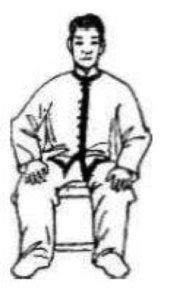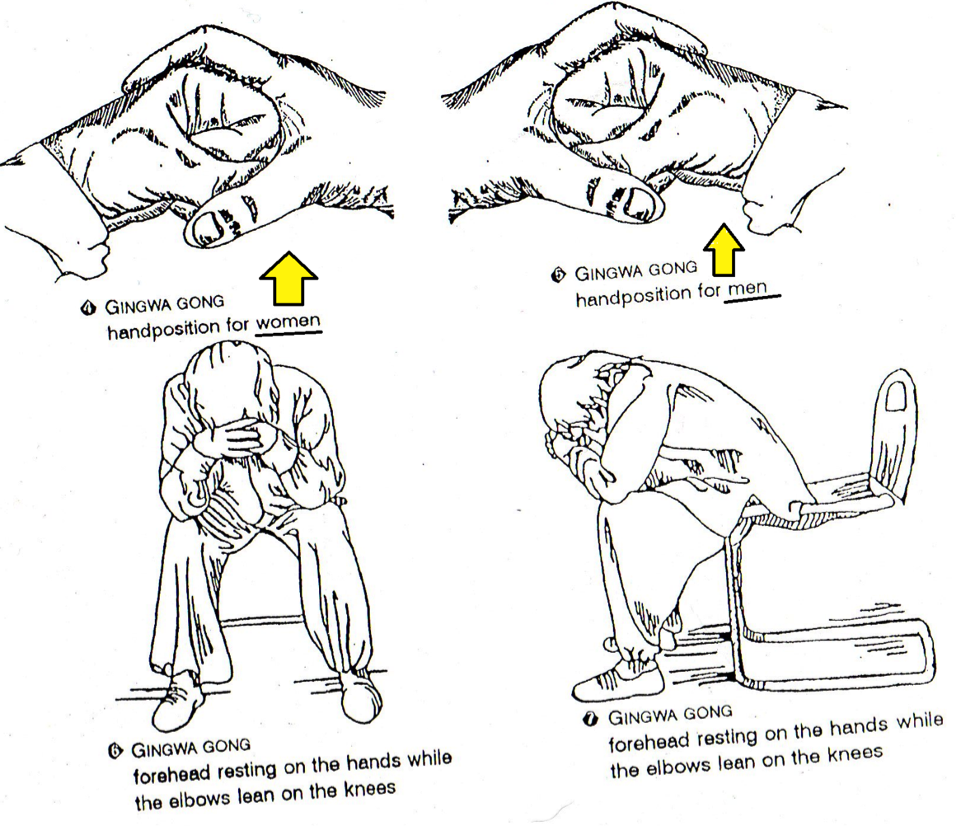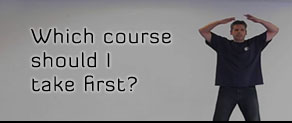From a traditional Chinese medicine (TCM) perspective, the pathological changes in obesity are mainly spleen (earth) and kidney (water) dysfunctions within the 5 elemental theory. Sluggish flow of the body’s vital energy (Qi) and inhibited ability to refine body fluids results in turbid phlegm obstruction. Energy practice (Qigong) helps to regulate the internal vital energy and blood flow and supports healthy metabolic functions. Over time, this specific Qigong eliminates the blockages caused by the malefic dampness and phlegm. This method produces a calming effect within the stomach and spleen, which relieves and clears the desire for food.
The Jade Frog Practice (also known as The Jade Toad)
This specific breathing and slimming exercise (Gingwa-Gong) is designed to turn the fat storage reserves in your body into energy fuel. Performing this exercise routine will also restrict and regulate the desire for food. In some cases, this non-desire period can last up to a full month. The exercise doesn’t take a lot of time, but should be performed three times each day for maximum weight loss results. Once your weight goals are obtained, the frequency of the routine can be reduced. As with any exercise routine, consult your physician prior to implementing the method herein.
- Sit upright on the front edge of a firm chair. Don’t lean back into the chair. Set your feet on the floor with your toes pointing straight forward. Your thighs should be parallel to the floor and your knees, thighs and shins should form a ninety-degree angle. In other words, your calves and shins are the vertical and your thighs are the horizontal. If this does not work out, then try another chair of different height.

- Relax the shoulders and allow them to drop lower, pull in your coccyx (tail bone) and bend your lower back slightly outwards and pull in your chin. Relax your arms and the rest of your body. Pull in your chest and make sure that your feet are in the same relative spacing as your shoulders, i.e. your feet are shoulder width apart.
- Now take in a deep breath and let out a relaxing sigh of relief. Place your hands as shown in the following illustration. For men, the right hand makes a relaxed (not clenched) fist which is held by the left hand. For women, the left hand makes a fist, which is held by the right hand. After forming the gender appropriate hand position, rest your elbows on top of the knees as shown in the next image. If this position is too difficult at first, you can rest your elbows on a table as long as it is lower than your belly button and allows you to still lean forward.

- While holding this posture with fist on the center of your forehead, close your eyes and try to think only of things that make you feel happy and at ease. Gently curl your lips upward into a subtle smile and hold this smile throughout the exercise. Keep thinking of happy and peaceful things for two minutes.
- After two minutes’ elapse, breathe in deeply and slowly (eyes still closed). Inhale through the nose and then slowly exhale through the mouth. Next follows a special breathing exercise that should be performed calmly and in as relaxed a manner as possible. It should not be done urgently or suddenly.
- Breathe in through your nose to approximately 80% or 90% of your inhale capacity. Hold your breath for two counts (one one-thousand, two one-thousand), then inhale again, filling your lungs to full capacity without exhaling in between. Once full of air, exhale in a controlled relaxed manner through your mouth. After exhalation, repeat this step for a total of ten minutes.
- After completing 10-minutes of this double-inhale (nose) single exhale (mouth) exercise, you are ready to do the closing routine. Rub your hands together vigorously so that heat and warmth is generated between your palms. While rubbing your hands, exhale very slowly with the sound “Haaahh” as if you were trying to fog a mirror with your breath. This will aid in warming up the hands. Massage your face with your warmed hands. Keep your eyes closed. Next massage your hair and scalp. With your fingers bent, making a claw like shape, slide your finger tips through your hair from the forehead backwards to the base of your neck in one single fluid movement. Repeat this 10 times. Then open your eyes slowly, stand up and stretch yourself as if you were getting up and out of bed in the morning (The yawn stretch). This weight loss (Gingwa Gong) should be performed three times per day until goals are reached. The routine can be lowered to once or twice per day or stopped all together if you continue to lose additional weight beyond objectives.


No comments yet.